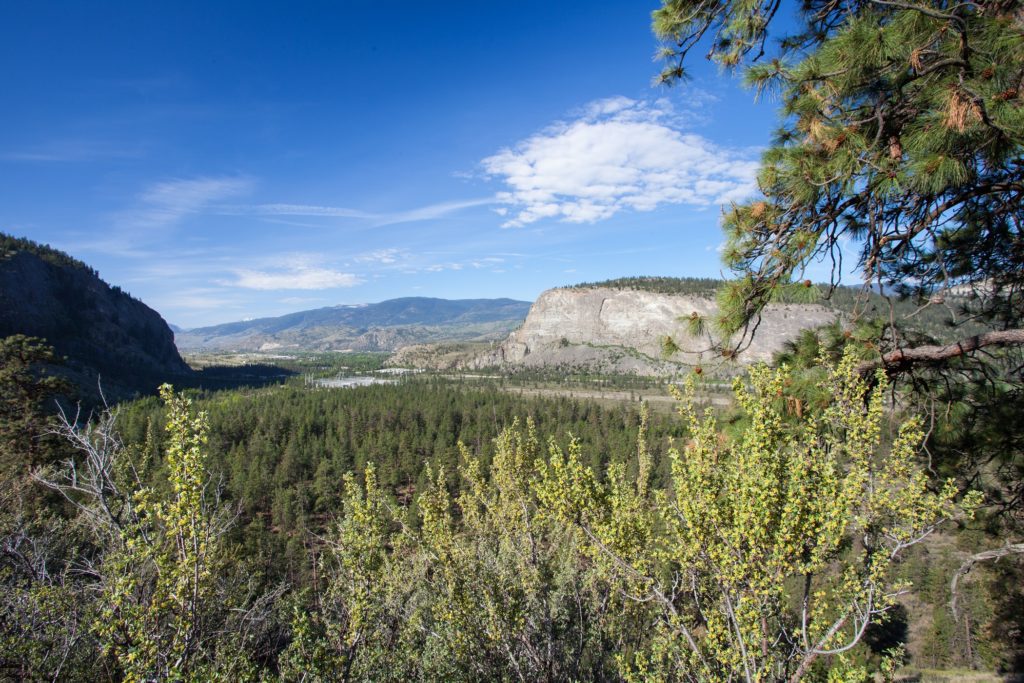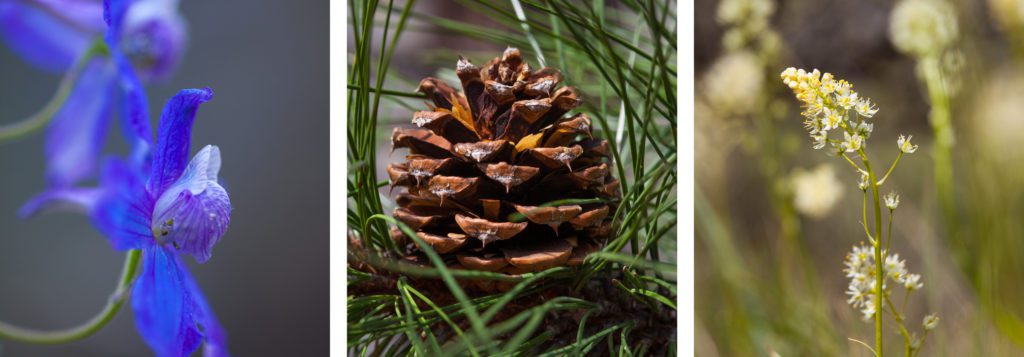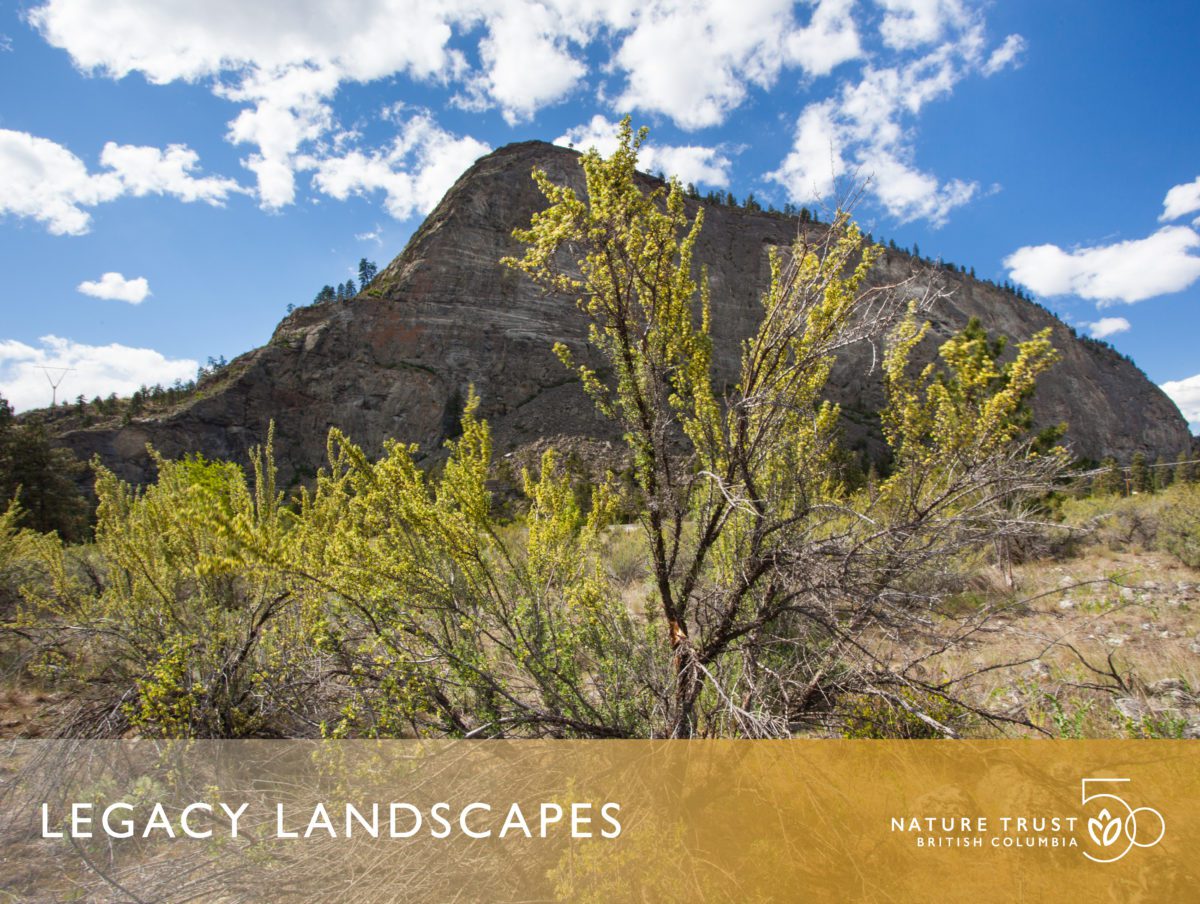
Walk with us along the 152-hectare conservation property called Antelope-brush. Stretching out around you are the antelope brush plants for which the property is named, their yellow and green branches twisting from the ground.
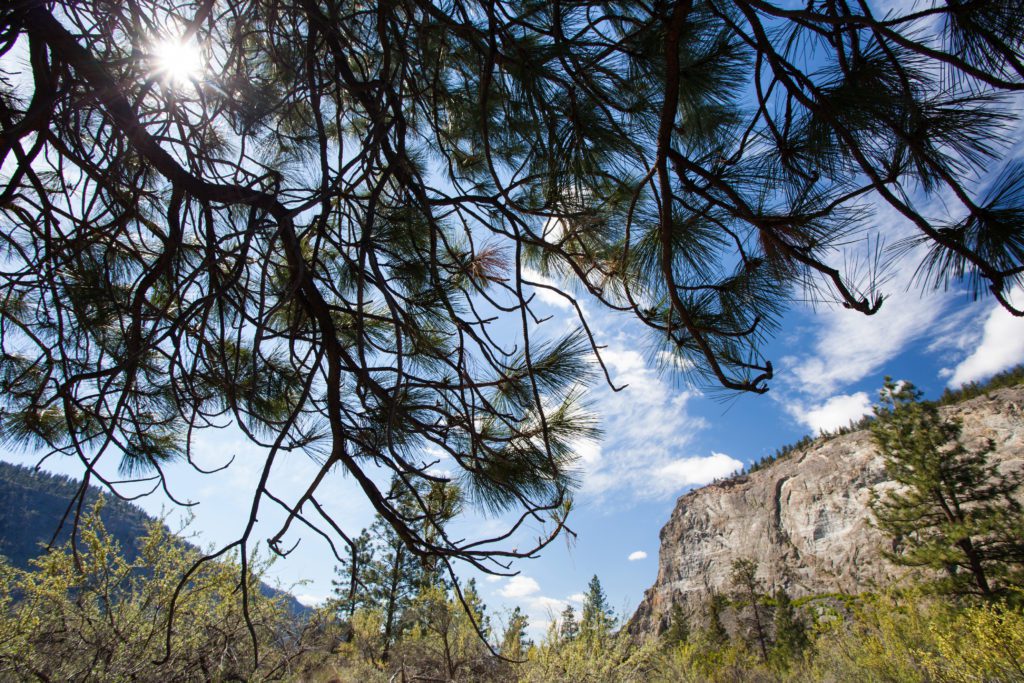
Behind the antelope brush is a backdrop of pine trees, their long green needles shading the hot sun. You can imagine an endangered pallid bat gliding between the branches at night.
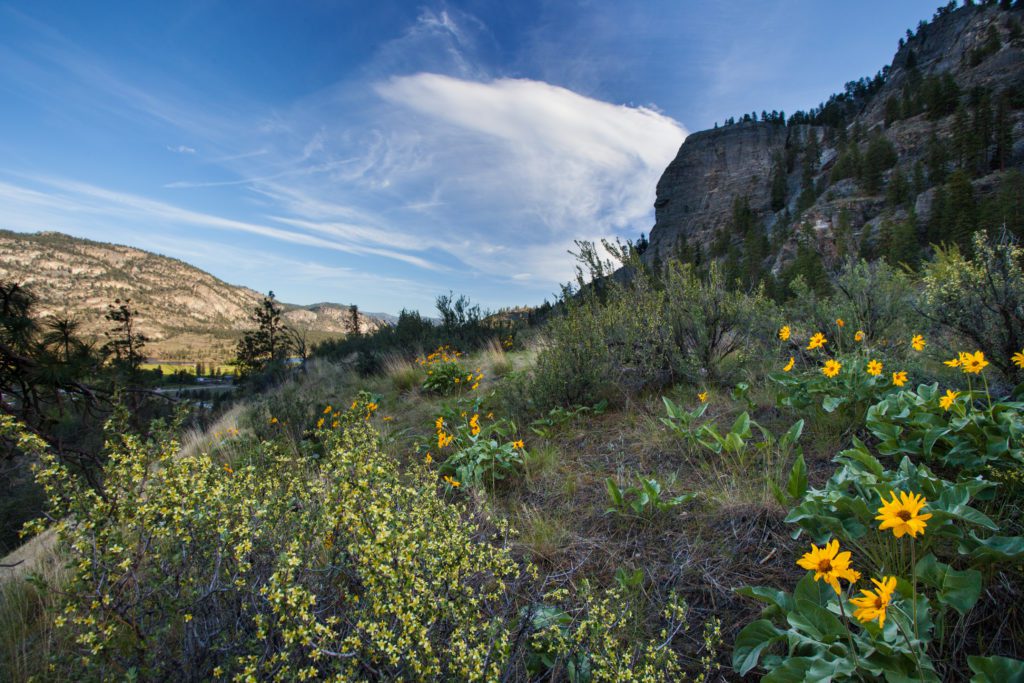
The property is home to 14 Federally-listed species at risk and 6 provincially-listed species and you look for them as you walk. Perhaps a desert night snake will slither past the yellow flowers, or a bighorn sheep will canter up the rocky cliffs.
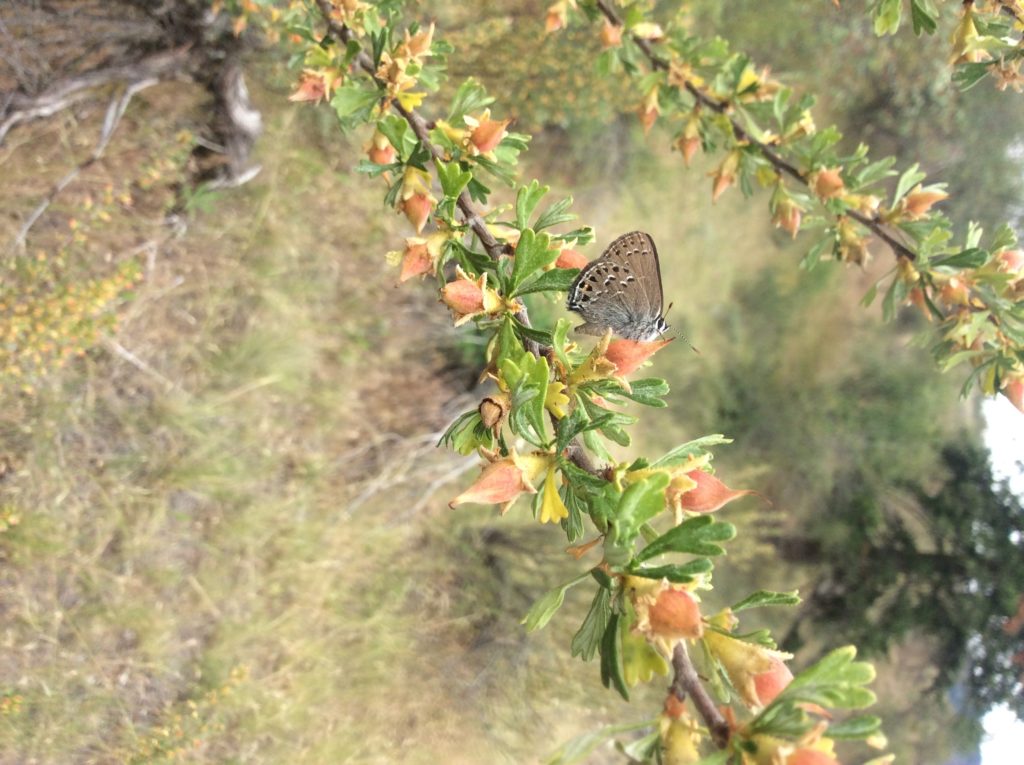
As you stoop to examine an antelope brush plant, you see a Behr’s hairstreak butterfly perched on it. This butterfly relies on Antelope-brush for reproduction as it is the only plant it can lay its eggs on.
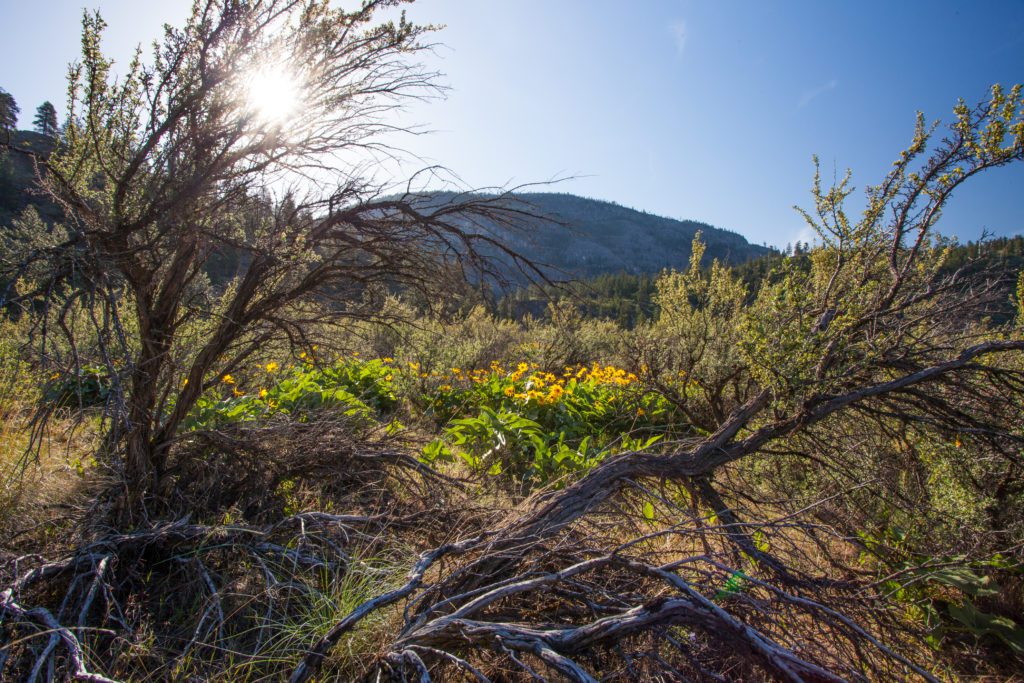
With only 7500 hectares of Antelope-brush remaining in the South Okanagan, you are thrilled to be walking through an area of its habitat that has been protected.
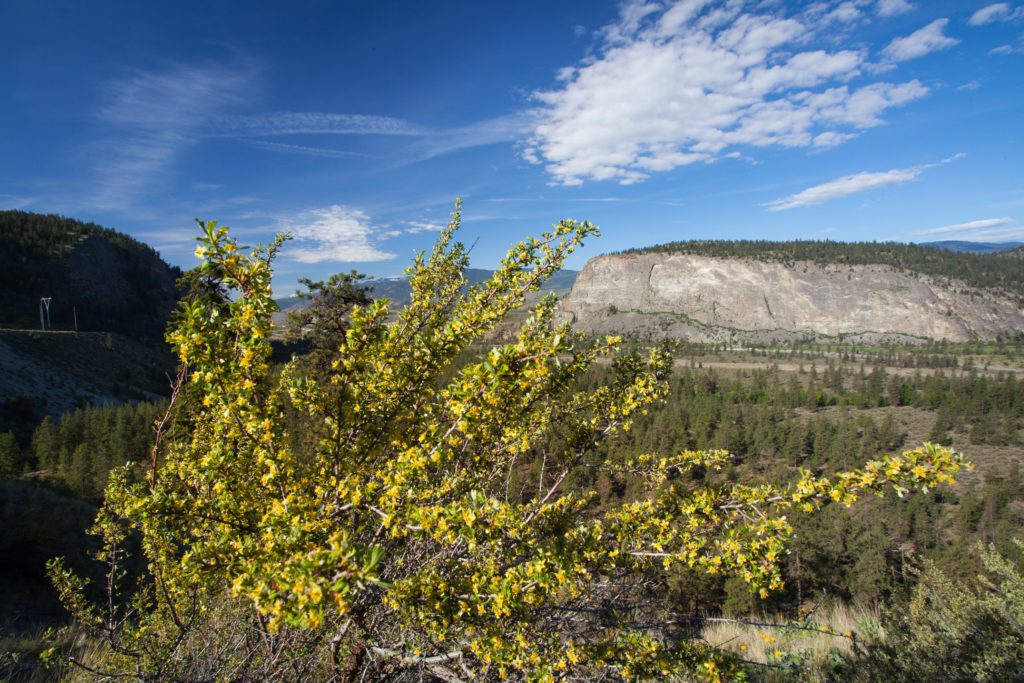
“Antelope-brush provides a protective cover from the sun and nesting and feeding opportunities for a diverse community of living things—many of them rare. In fact, over 20 endangered and threatened species have been documented on this property.”
- Nick Burdock, Okanagan Conservation Land Coordinator
Facts
- From 2003 to 2016, the Nature Trust of BC acquired the Antelope-brush conservation land with 152 hectares. The property is named after the endangered ecosystem it protects, which only occurs in small areas of the Okanagan.
- There are 14 SARA-listed species and 6 provincially-listed species that are known to be present on the Antelope-brush conservation property complex, including bighorn sheep, pallid bat, desert night snake, great basin spadefoot toad and Lewis’s woodpecker.
- Most notably is the endangered Behr’s hairstreak, which has greater than 50% of its population occurring on this property. This butterfly relies Antelope-brush for reproduction as it is the only plant it can lay its eggs on. With only 7500 hectares of Antelope-brush remaining in the South Okanagan, conservation on this property is critical.
